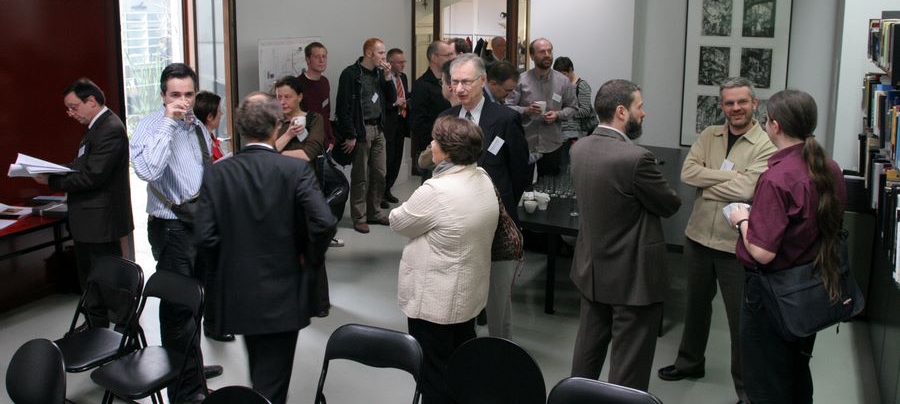
Denis Javaux
Control room design
In the 20th Namahn lecture, Denis Javaux of Symbio argued that the design of a control room can positively or negatively impact safety and performance objectives. While humans still play a central role in these decision-making nerve centres, the physical construction of the centres must be based functional design and support man-machine cooperation in the pursuit of a common goal.
Lecture date: 25 Nov 2010
Javaux used real-life examples of projects in a variety of domains, including air traffic control and financial trading, to demonstrate how he and his colleagues at Symbio apply functional design first: physical or architectural design (which he describes as the “wrapping”) is the second step. The final control room should be a physical embodiment of the functions, where teamwork between humans and machines is facilitated.
Functional blueprint
Javaux argued that the first job of the designer is to understand what a control room does and what it controls, likening it to a machine with input, output and internal processes. The functional design process makes things explicit and means that before any material work begins, the client has decided how to work in the final physical space. Javaux used Symbio’s design of the air traffic control tower at Brussels Airport, performed for Tractebel Engineering, to illustrate the different design phases involved.
View, listen, and speak
The control tower at Brussels Airport is quite a challenge from the point of view of functionality. Inside, controllers operate across a vast space: among other disadvantages, this can make necessary communications between controllers difficult. As the first step in the re-design process, Symbio interviewed and observed the controllers at work, studying workflows, roles and tasks, when and how they need to communicate with each other or the outside world, and how much of the airport runways they need to see. Based on these findings, Symbio created an abstract functional model that formed the blueprint for the entire control room design.
Then began the task of translating this into a 3D physical design: room layout, consoles, seating, other fittings, testing prototypes, IT, lighting and so on. New user interfaces were also created at this point and Javaux gave the example of a prototype designed by Namahn for an air traffic control tool. Finally, the architectural design phase, described by Javaux as “sheltering” the workflows, took place. In an ideal world, this would be a custom-built “shelter” around the functional control room. However, in every project they have undertaken to date, the building already existed.
To conclude, Javaux spelt out the three tenets of successful control room design – always followed by Symbio, often violated by other designers:
- Control rooms should not be improvised: Each control room has a precise function and should be designed accordingly. Not doing so can induce human error and lead to accidents such as Three Mile Island or Chernobyl.
- Humans (still) play a key role: Human-centered, or at the very least human-minded, design of a control room reduces the risk of error, makes the highly skilled people working there happier and more productive, and improves the social skills needed in the kind of emergencies that can typically occur in these environments.
- A control room is a living thing: The design of a control room must enable it to be nurtured, monitored and updated throughout its lifetime, to cope with factors such as aging of material, technological advances, and changing management targets.
It seems that in the world of control rooms, form should most definitely follow function.
Interview
Download the interview (mp3)